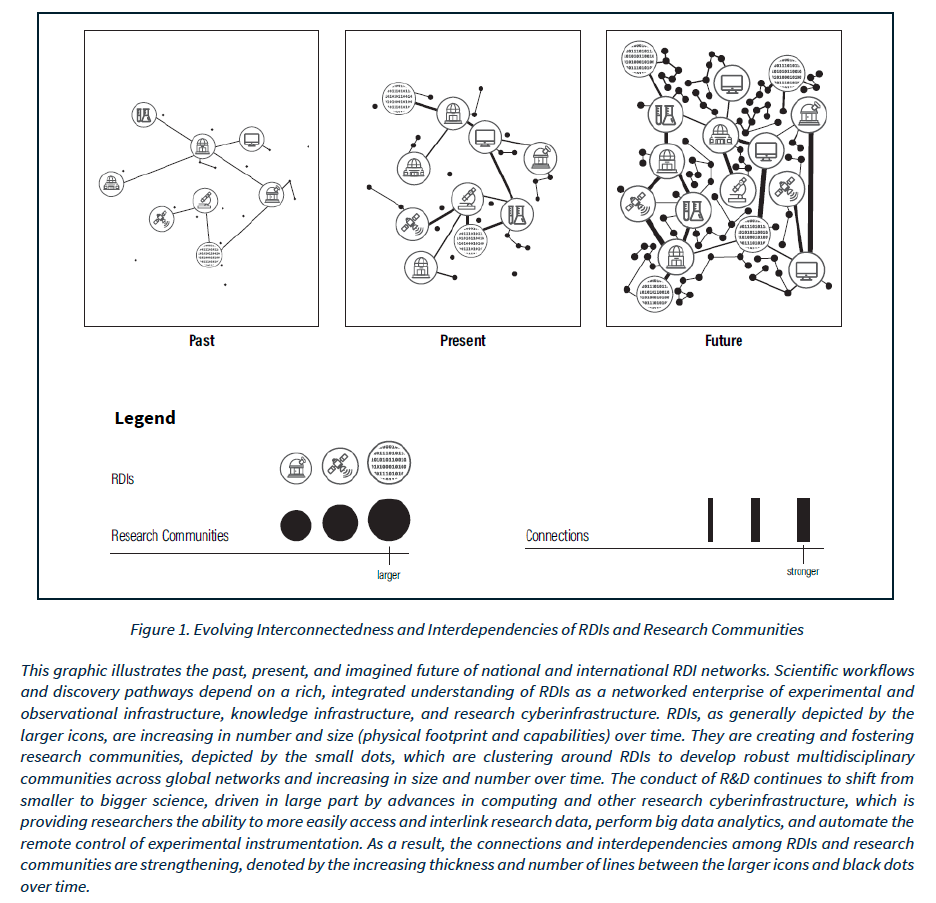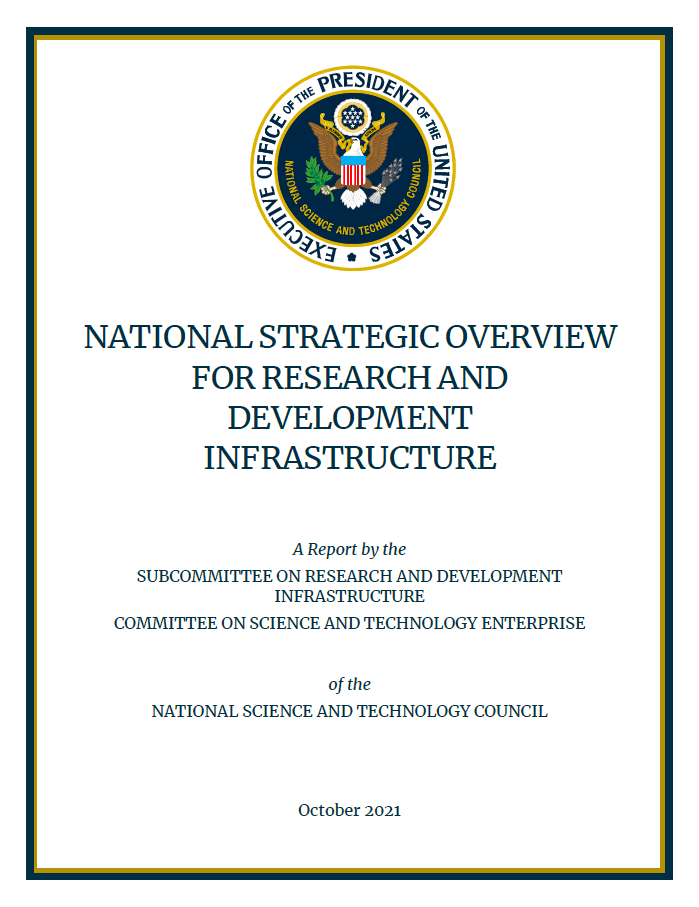In a National Strategic Overview for Research and Development (R&D) Infrastructure issued earlier this month, the National Science and Technology Council (NSTC) broadened its view of R&D Infrastructure to include "experimental and observational infrastructure, knowledge infrastructure, and research cyberinfrastructure—all of which are integrated resources relied upon by our Nation’s R&D enterprise” (NSTC, 2021, p. iii). Whereas physical environments, such as air ranges used for autonomous systems research and development, might be the focus of some reports, the NSTC emphasizes the the interconnectedness and interdependencies of the Science and Technology (S&T) community.
The S&T community is in the midst of a paradigm shift, according to the NSTC. It is a shift to strongly networked clusters of S&T community members, as well as R&D Infrastructure, from "large-scale, stand-alone and discipline-specific experimental platforms and facilities” (NSTC, 2021, p. 1). The modern R&D Infrastructure consists of:
- Experimental and Observational Infrastructure, such as R&D facilities and ranges;
- Knowledge Infrastructure that accelerates discovery of research, resources, information reuse, and remote access; and
- Research Cyberinfrastructure with interconnected advanced computer resources.
Figure 1 depicts the NSTC's view of the interconnectedness of R&D Infrastructure in the past, present, and future.

A similar recognition of the need to both enable mobilization of the nationwide S&T community and develop the hyper-connectivity required to support the sort of interconnected and interdependent R&D described in the overview was the genesis of America’s Sea Land Air Military Research initiative (SLAMR). Building on numerous successes of working with commercial, academic, state, and government partners resulting in accelerated development and transition of needed technologies to warfighters’ hands, SLAMR is already piloting the capabilities for which the NSTC calls with the assistance of its partners, such as the Naval Postgraduate School Foundation.
- Adding Secure Maritime 5G capability to the Naval Postgraduate School’s suite of field experimentation environments used by the Joint Interagency Field Experimentation program, for example, provides more robust Experimental and Observational Infrastructure.
- Nationwide S&T communities bridging commercial, academic, and government domains are taking advantage of preliminary capabilities to collaborate, share data and information, and coordinate R&D initiatives through SLAMR’s work to evolve the digital enterprise nationally (EDEN).
- In experiments over the next year, SLAMR will demonstrate advanced means for commercial, academic, and state and federal government S&T teams to collaborate from wherever they are located in secure, U.S. Navy-accredited environments leveraging collaborative computing resources.
Get your copy of the National Strategic Overview for R&D Infrastructure from SLAMR’s S&T knowledge store.
Source: National Science and Technology Council. (2021, October). National Strategic Overview for Research and Development Infrastructure. https://www.whitehouse.gov/wp-content/uploads/2021/10/NSTC-NSO-RDI-_REV_FINAL-10-2021.pdf


